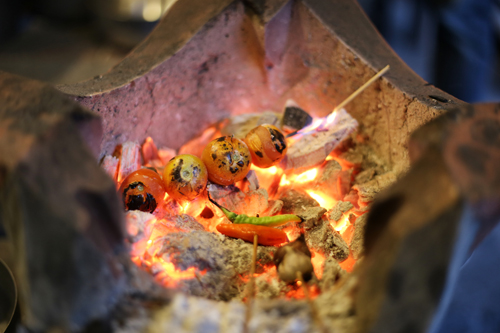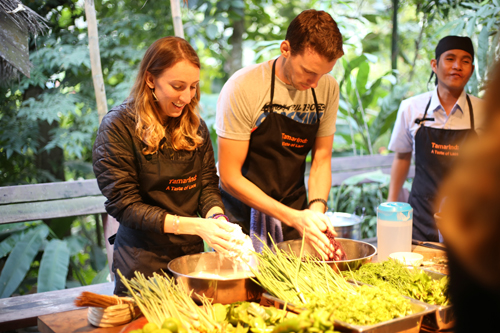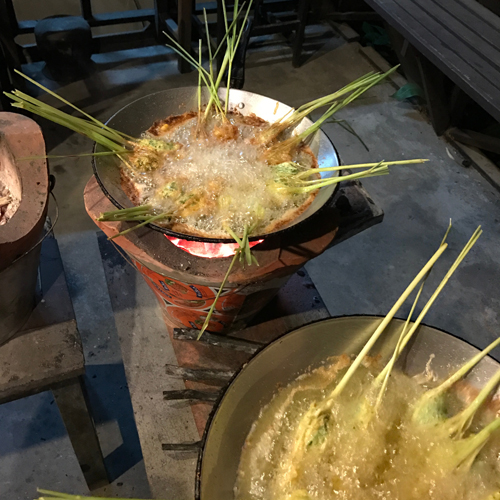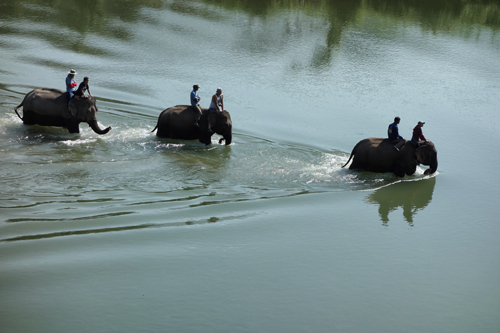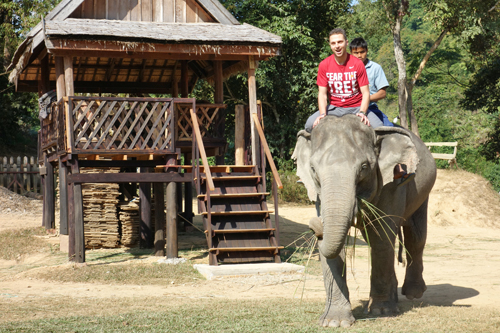On our first afternoon in Luang Prabang, we meet an ex-San Franciscan who has stationed himself in Laos teaching English. He runs a non-profit school, inviting any and all who wish to learn in what little free time they have. After only a brief conversation, we are invited to his evening class to be interviewed by his students and then join the group for dinner. We immediately accept.
We’re picked up by students on motorbikes and then make our way to the classroom (and home for some of the students). The class starts with the students asking Lindsey and me about our jobs and soon morphs into us also asking them questions about the Hmong and their lives. The students, all boys, are from large families in poor villages. In most instances, they are the only English speakers in their communities. In Laos, an education is not free. Their families have worked hard and sacrificed greatly to enable them to attend school. But the school system in Laos is insufficient. Teachers are paid sporadically and won’t show up if they have a better offer for their time. It’s not uncommon that teachers don’t know about the subjects they’re teaching, so classes are often spent copying pages from a textbook. We learn that the non-profit English class we are attending strives to supplement the education from Laos schools. The boys learn about the countries that surround Laos. They learn how to maintain a budget. They learn that anything is possible if they can imagine it. The experience is both humbling and inspiring.
Class wraps up with the some of the students playing guitar and all singing along. Then some have to leave, but we stick around for more conversation over dinner. The students prepare the dinner and while we eat, we learn the aspirations of everyone around the table and the challenges that they will need to be overcome to achieve them. The goals we hear vary from becoming a journalist and a teacher to finding love and starting a family.
Lastly, before parting ways for the night, we get the chance to help one of the students with an essay for an application he is working on, which is inspiring both because of the deeply intense subject matter and because of how much he had to get through to get to this point in his life. Through this essay, we learn the student’s path of many trying and difficult jobs and experiences that led him to today. We wonder how he ever came up with the idea that things could be different when he had never been presented with an alternative way of life. We’re not sure we would have had the motivation, energy, and general street smarts to even come close to what he has been able to do.
We make plans to meet up again tomorrow for the Hmong New Year’s kickoff before being motorbike back to our Guesthouse.
